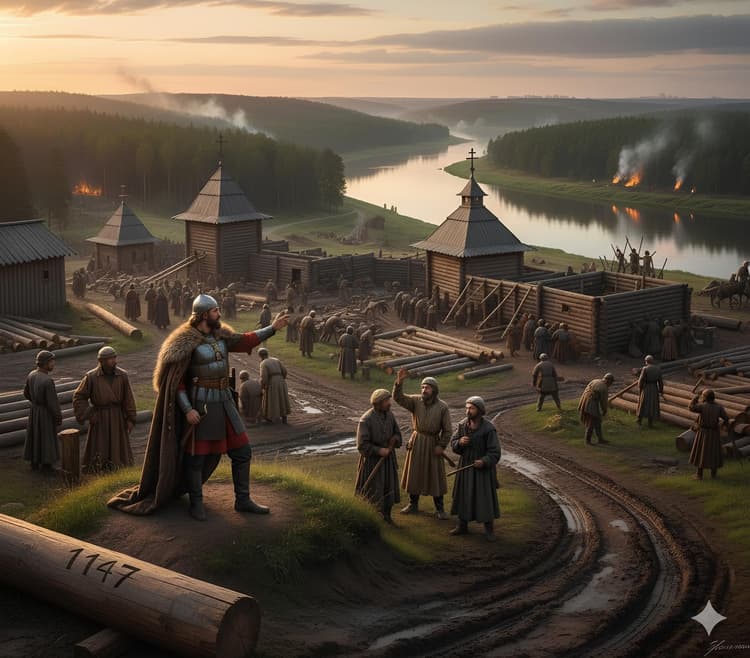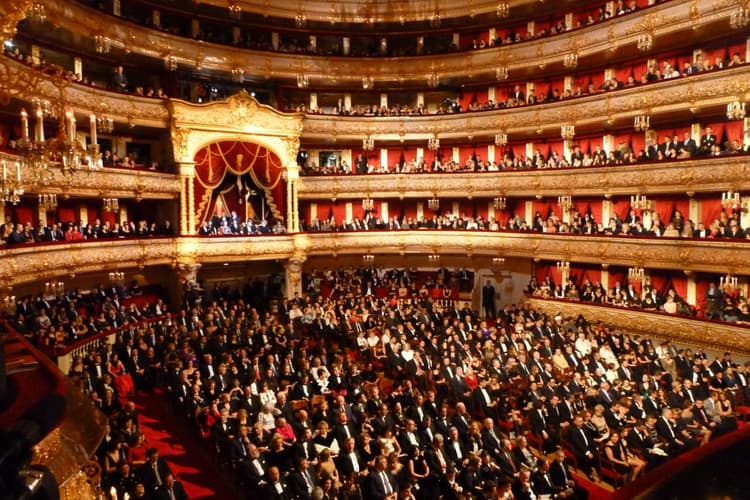March 27,6 min. to read
Large-Scale Renovations: What Has Been Achieved So Far
Moscow's theaters have been in the spotlight of city authorities for several years. Since 2013, the capital has undergone extensive work: the construction, reconstruction, restoration, and major repairs of 103 buildings and premises in 41 city theaters have been completed. Each renovation was accompanied by comprehensive modernization — modern equipment and technologies have enabled directors and performers to realize the boldest creative ideas. These changes have already borne fruit: last year, Moscow theaters organized over 24,000 events, including 259 premieres. Audiences highly appreciate the quality of the productions and the comfort of the renovated halls, as evidenced by the growing popularity of the theaters. Now the city is embarking on a new phase — the renovation of another nine theaters over the next five years. Among them:- Moscow Operetta Theater — a legendary venue known for its musical productions.
- Hermitage Theater — an intimate theater with a rich history.
- Taganka Theater — an iconic place associated with the name of Yuri Lyubimov.
Supporting Talent: Investing in the Future of Theater
Building renovations are only part of the program. Moscow actively supports the theatrical community, especially young professionals. The All-Russian "Talents" competition helps to form a talent pool: its winners get a chance to take up positions as artistic directors or theater managers. This opens the door to fresh ideas and new names. For the creative youth, several initiatives have been launched simultaneously:- Open Stage Grant Competition — young directors and playwrights can receive funding for staging plays and musical projects.
- Directors’ Laboratories Project — provides theatrical venues for creating sketches of performances, helping young talents experiment and hone their skills.
- Moscow and Muscovites Play Competition — in 2024, the authors of the three best plays were given the opportunity to stage their works in the leading theaters of the capital.
Financial Support: A Billion for Creativity
Since 2016, Moscow theaters have received over 1 billion rubles from the city budget in the form of grants. These funds have been used to create 297 creative projects, 35 of which were realized in 2024. Such financial support allows theaters to stage ambitious productions, attract talented professionals, and experiment with different formats.Why Is This Important for Moscow?
Moscow is home to about 250 theaters, of which 64 are city-owned. Their renovation and support are not merely about improving buildings, but an investment in the cultural future of the capital. Modern theaters become hubs for residents and tourists, and new opportunities for artists contribute to the emergence of striking productions. Audiences are already noticing the changes: comfortable halls, high-quality sound and lighting, as well as a diverse repertoire, make a visit to the theater a truly special event. The plans for 2030 promise to amplify this effect, transforming Moscow's theaters into world-class spaces.What Awaits the Theaters by 2030?
The renovation of nine theaters by 2030 is part of a long-term strategy for developing Moscow's cultural infrastructure. Each building will be equipped with modern technology, opening up new horizons for directors and actors. At the same time, the city maintains a balance between tradition and innovation, supporting both classic productions and experimental projects. This process is not only about renovating buildings, but also about creating conditions for creativity and inspiration. Moscow reaffirms its status as a theatrical capital where art is accessible to everyone.Conclusion
The plans to renovate nine theaters by 2030 are a step towards strengthening Moscow's cultural potential. The reconstruction of buildings, financial support, and focus on young talent create a solid foundation for the development of theatrical art. Residents and visitors of the capital will be able to enjoy performances in modern halls, and artists will have everything necessary to realize their ideas. Moscow continues to be a city where theater lives and thrives.Latest News

Who Founded Moscow: History, Myths, and the True Year of Its Origin
Who founded Moscow remains debated: officially first mentioned in 1147, but archaeology shows earlier settlements. Yuri Dolgoruky likely strengthened an existing town.
Read more
.jpg&w=750&q=75)
Rome Introduces €2 Fee to Visit Trevi Fountain to Protect Monument and Manage Tourism
From February 2026, visitors must pay €2 to approach Rome’s Trevi Fountain, aiming to control crowds, protect the monument, and improve visitor experience.
Read more

MHT vs MHAT: What’s the Difference Between Moscow’s Two Legendary Art Theatres
MHT and MHAT: what’s the difference between Moscow’s legendary art theatres? History, split of 1987, traditions, repertoires, and key distinctions explained.
Read more
.jpg&w=750&q=75)
Alexander Pushkin: Life, Exile, and Literary Legacy
A concise biography of Alexander Pushkin: childhood, exile, major works, family life, tragic death, and enduring legacy in Russian culture.
Read more
.jpg&w=750&q=75)
VDNKh Ice Rink 2025–2026: Season Opening, Prices, Schedule & Events
VDNKh ice rink opens 25 Nov 2025–1 Mar 2026. >20k m², tickets from 300₽, night sessions & events.
Read more
Latest Articles

Setting Appropriateness & Romantic Success: New Study Insights
Discover how the perceived appropriateness of a setting drives the success of romantic advances—often outweighing factors like attractiveness or familiarity.
Read more

Cyprus: Europe’s Sunniest Destination – 300+ Sunny Days
Explore Cyprus, Europe’s sunniest destination with 300+ sunny days a year. Discover top resorts, best seasons to visit, and why it’s perfect for a holiday.
Read more

Belly Fat and Aging: New Scientific Discoveries
Recent research reveals how belly fat accelerates aging, boosts inflammation, and increases Alzheimer's risk—discover key health insights and prevention tips.
Read more
.jpg&w=750&q=75)
Burning Fat with Your Mind: How “Remembering” Cold Activates Brown Fat and Boosts Metabolism
Discover how recalling cold memories can trigger your brain to activate brown fat, boost metabolism, and aid weight loss—even from the comfort of a warm room.
Read more

Bridging the Education Gender Gap: Why Boys Fall Behind and How to Close It
Boys globally lag in language skills due to peer influence, stereotypes, and systemic issues—discover causes, impacts, and strategies to close the education gender gap.
Read more

